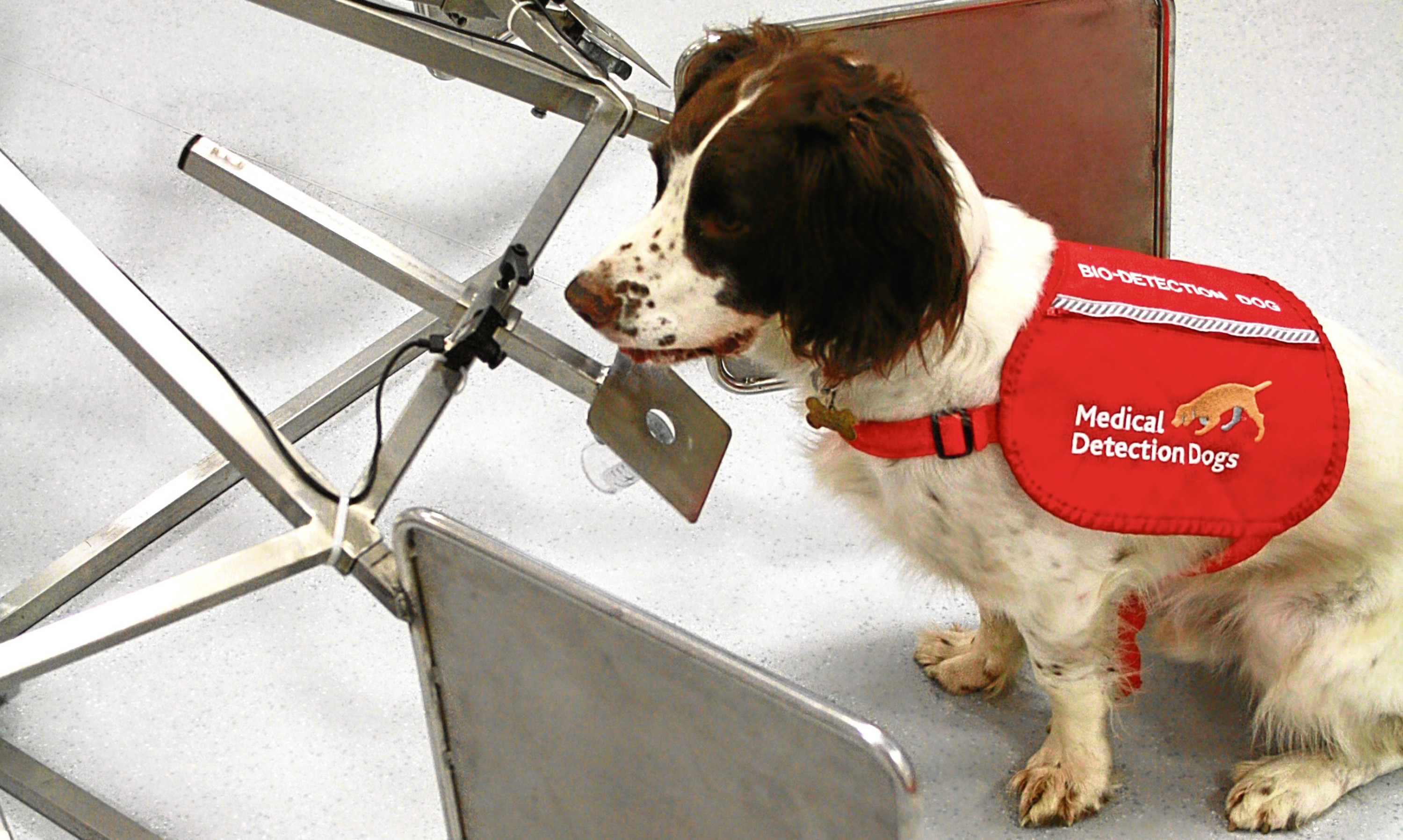Dogs’ natural abilities to be more than man’s best friend sometimes strike me as quite uncanny.
I was recently introduced to the charity Medical Detection Dogs, which was founded in 2008 and has extended its work now to Scotland, opening its first centre in Kilbirnie, North Ayrshire.
Mandie Danks, the resident dog instructor, is keen to raise the charity’s profile and develop links with other parts of Scotland.
A dog’s sense of smell is 10,000 times better than ours and Medical Detection Dogs uses their highly developed scenting abilities to detect a number of human diseases.
There are two sides to the charity – medical alert assistance dogs and cancer and bio detection dogs.
Early training for the medical alert assistance dogs starts at around eight weeks, much like the Guide Dogs for the Blind puppy walking scheme, to socialise the puppies and instil basic training.
After this socialisation stage the dogs are matched with a client and intensive scent training begins.
Sniffer dogs
Medical Alert Assistance dogs are trained to recognise the changes associated with life-threatening medical conditions such as type one diabetes and severe allergies.
They become a member of the client’s family, becoming a 24/7 canine early warning system who will alert their owner to an imminent episode, preventing ambulance call-outs and hospital admissions. Where the client is a child, the dog is trained to alert an adult.
Cancer and bio detection dogs are fostered with volunteer families and carry out their work at the charity’s centre at Milton Keynes.
They have no contact with patients but are trained to sniff breath and urine samples sent into the centre by doctors as part of studies to detect breast and urological cancers.
The dogs can detect minute odour traces created by these diseases, potentially leading to earlier and less invasive diagnosis of certain cancers than conventional methods. For instance, prostate cancer trials have had a 93% success rate.
Because of their hunting and scenting abilities, Labradors and spaniels are favoured breeds. They are easy to motivate and the trainers seek to develop their natural instincts in a new direction.
The charity receives no government funding and is wholly dependent on the generosity of donations from trusts and the public.
Apart from the support side of its work, the charity is actively involved in research into detection of other diseases.
To learn more visit their website or contact mandie.danks@medicaldetectiondogs.org.uk
Sand dwellers
Sand martins are the smallest of our swallows, which helps in identifying them. However, they don’t have the swallows’ distinctive trailing forked tail and they don’t have the house martins’ white rump.
Their plumage is plain brown above and in flight you can’t miss their white underparts with a brown band across the upper breast.
I remember seeing them for the first time as a youngster on a farm near Dolphinton in the Pentland Hills, where an uncle had a weekend hut, prosaically called The Hut.
Their name tells you that you are most likely to see them near sandy banks and places where they can easily dig out their nesting tunnels.
There are half a dozen sites locally where I have gone in past seasons to watch them – and now I’ve found a new one.
Like their larger cousins, they are constantly on the wing and I spent an hour on Monday afternoon in warm sunshine while the pretty birds darted across the sky catching airborne insects, then dipping and swinging up into their nest entrances to feed their chicks.
They are sociable birds who nest in colonies; conversational too, wheeling above me and chattering amongst themselves and paying not a blind bit of notice to me and Inka. I’d have stayed longer but I couldn’t endure Inka’s deep sighs of impatience at the lack of action.
A time to talk
On Wednesday the Doyenne and I were invited to join friends for a day’s fishing on the River North Esk at Balmakewan. Our host had caught a grilse by the time we arrived.
As it turned out the Doyenne and I both had a blank day but we’ve reached that agreeable stage in life where the fishing isn’t everything.
We took time off to sit in the sun on the riverbank and Inka plowtered about finding new smells. Much like the old philosopher who sometimes sat and thought, and sometimes he just sat, some of the time we sat and chatted and some of the time we just sat.
Montrose poet Helen Cruickshank, who seems to have known every wind of the river all the way to the head of Glenesk, where it rises, wrote the poem The Ponnage Pool about a salmon pool below Marykirk, where the river swings round towards her childhood home of Hillside.
It must have been a special spot, for she writes of her memories – I am the deep o’ the pule, / The fish, the fisher / The river in spate, / The broon o’ the far peat-moss, / The shingle bricht wi the flooer / O’ the yallow mim’lus / The martin fleein’ across.
She saw the sand martins too.
